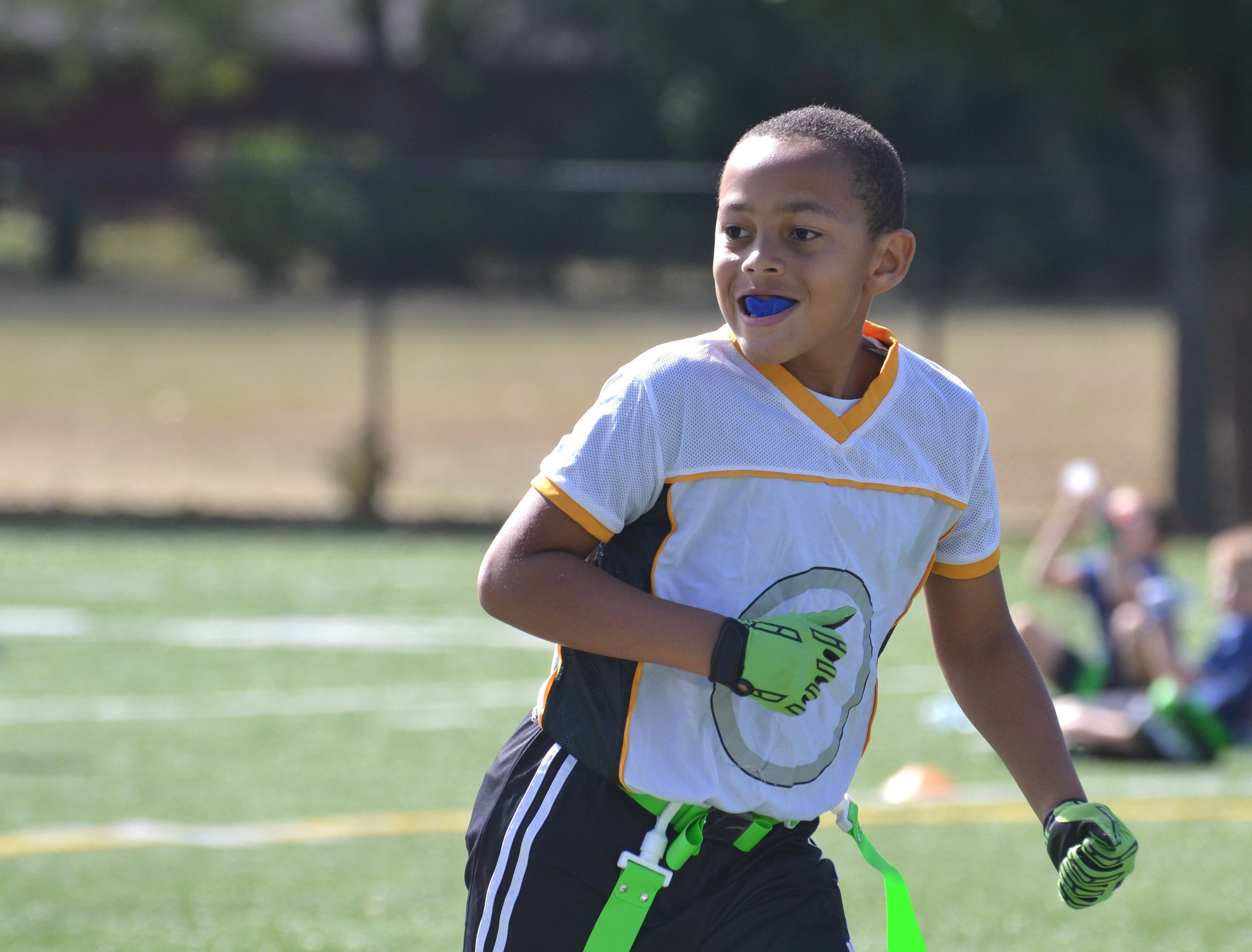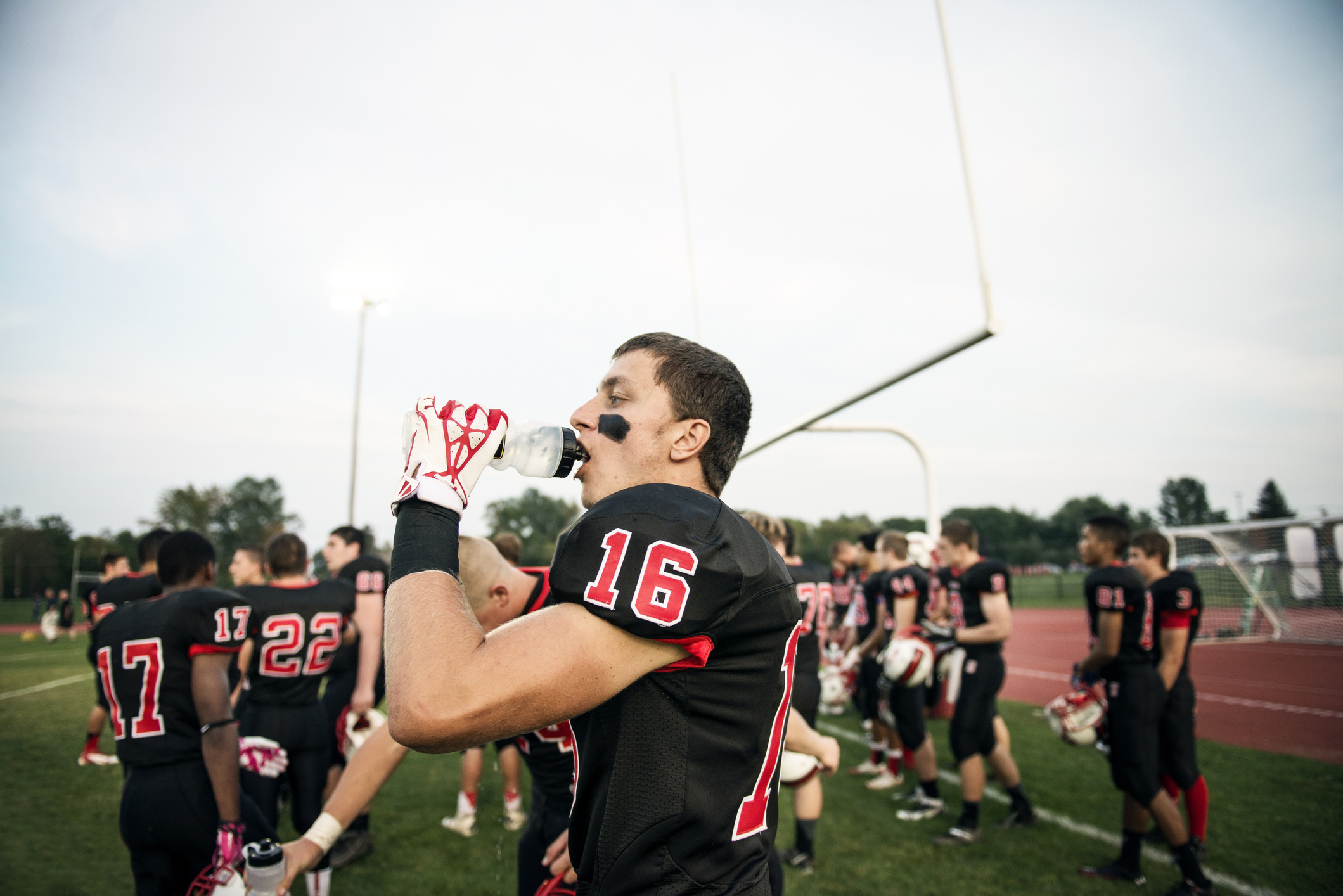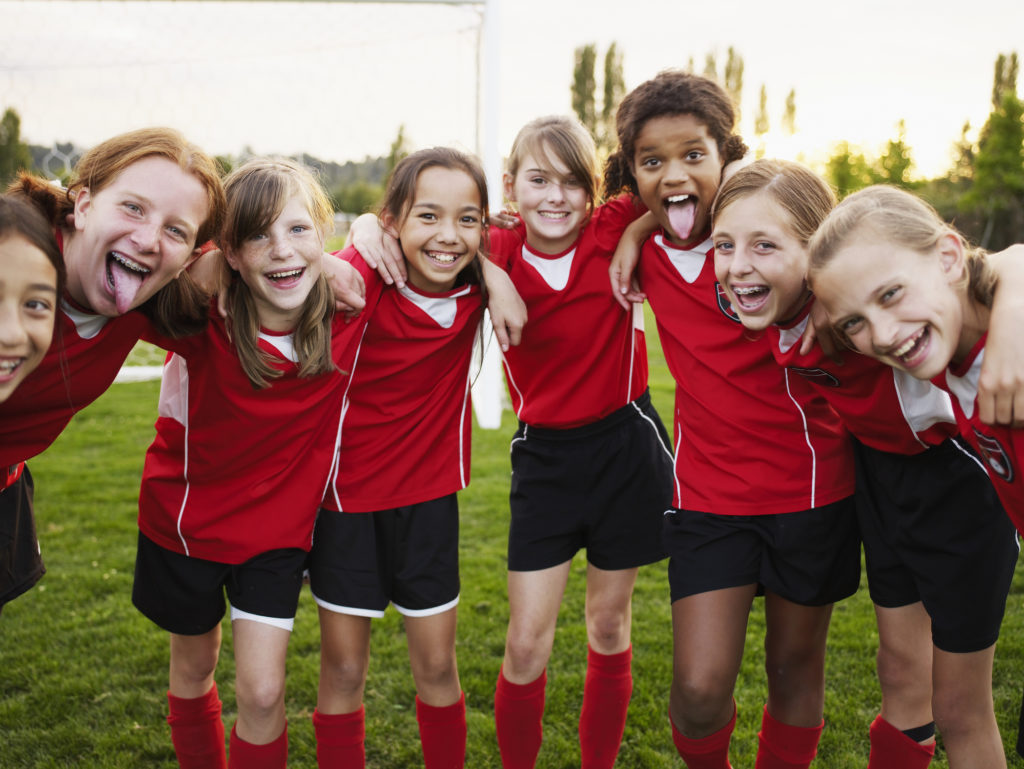Keeping kids safe and healthy during the fall sports season
Fall is in the air, and now more than ever, kids and teens are excited to get back to playing the sports they love like soccer, football, and flag football.
Playing and participating in organized sports is beneficial for kids and teens in so many ways. It promotes physical health through exercise and psychological benefits through collaboration and teamwork. Sports can increase physical coordination, fitness, and self-esteem and teach important lessons about teamwork and self-discipline.
As with everything, too much of a good thing isn’t always a good thing. Sports always carry the risk of injury for any child or teen who participates, because their bodies are still growing and their coordination is still developing. More than 3.5 million children ages 14 and younger are treated for sports-related injuries each year.
Half of those injuries can be prevented with proper use of safety gear, changes to the playing environment, and following sports rules. Also parents, athletes, and coaches should adhere to the COVID-19 guidelines for safe sports play, set in place by the CDC and state and local governments.

What’s so dangerous about sports?
Most sports injuries in kids can happen due to any of these reasons:
• Lack of education and awareness about safety precautions and potential injury
• Insufficient or lack of equipment
• Poorly conditioned players
What can we do to protect kids and teens while playing sports?
• Ensure that kids wear the correct safety gear and equipment
• Making sure the playing environment is well lit and appropriate for the game
• Enforcing safety rules
• Keeping players hydrated during and after sports
• Taking breaks while training and during games to prevent overuse injuries
Safety gear and equipment
Safety gear and equipment should be sport-specific. Depending on the sport, safety gear may include goggles, mouth guards, shin, elbow, and knee pads, and helmets. The safety gear should fit properly and sports equipment like balls, bats, baskets, goals, and nets should also be in good working condition. Any damage should be repaired or the item should be replaced. The playing area should be free from debris and water.
Before kids play, get them a physical.
To make sure your child is physically fit to play in a particular sport, bring them for an annual sports physical. These physicals can reveal physical strengths and weaknesses, and can help determine which sports are appropriate for the player.
When is my child ready to participate in sports?
Starting a child in sports at too young an age may not benefit the child physically. Children can start playing team sports when they express strong interest and you feel they can handle it. Age and size shouldn’t be the only measures used. Also consider their ability to understand the concept of rules and teamwork. Keep in mind that no two children are alike, and some may not be ready physically or psychologically to take part in a team sport quite yet. Base your decision on whether to allow the child to take part in a particular sport based on:
• Age
• Weight
• Build
• Physical development
• Emotional development
• Child’s interest in the sport
The American Academy of Pediatrics recommends that late-developing teens not take part in contact sports, like football, until their bodies have developmentally “caught up” to their peers.

Staying hydrated matters!
Sweat lost during sports must be replaced with equal amounts of fluids each hour of intense sports activity. Your child should drink fluids before, during, and after each practice or game. To avoid stomach cramps from drinking large amounts of fluids at once, drink about 1 cup of water or sports drink every 15 to 20 minutes. While playing, keep away from beverages with carbonation and caffeine. Be on the lookout for these symptoms of dehydration in your athlete:
• Extreme thirst
• Weakness
• Headache or dizziness
• Dark-colored urine
• Slight weight loss
If your child shows these signs of dehydration, make sure your child gets fluids and a snack immediately. The symptoms can look like those of other health problems. Always see a healthcare provider for a diagnosis.
As you and your children venture into the highly anticipated sports season, make safety your top priority. Children’s Hospital’s Specialty Center in Baton Rouge is here for you, with a dedicated Sports Medicine team. Click here to learn more.














